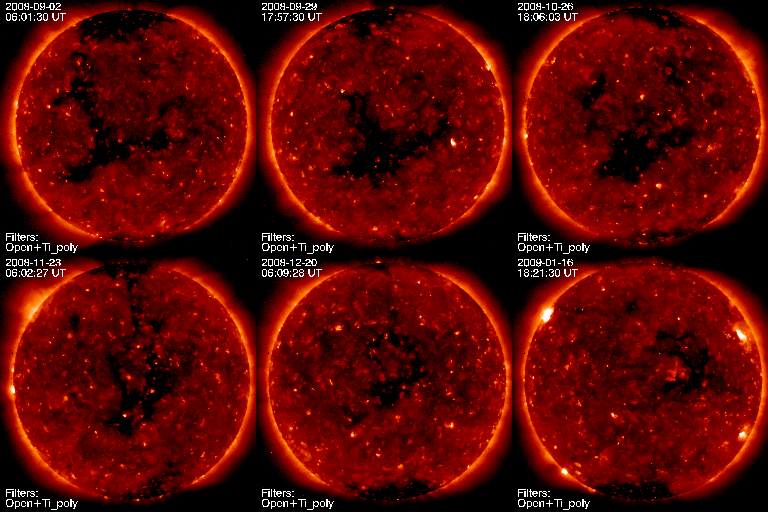Solar X-Ray Videos from Hinode/XRT
Posted: Tue Dec 06, 2011 4:24 pm
Hello Everyone!
I'm excited to join the asternauts here to share some videos produced by the XRT team. XRT (X-Ray Telescope) is one of three instruments aboard the Japanese satellite Solar-B, or Hinode (sunrise). Hinode launched in September of 2006 and has been sending back wonderful new and scientifically valuable images ever since.
XRT has long had a "Picture of the Week" website, where images and movies get posted on a [oft-semi] weekly basis, but we've now also introduced a YouTube channel to hopefully reach more people and support things like embedding our videos in message boards.
I'll be posting to this thread each time a new video gets uploaded to YouTube, which will include brand new videos as well as new-to-YouTube versions from the "Picture of the Week" site. This should be something like twice a week until most of the old videos have YouTube counterparts, and then weekly after that. (Some of you may have already seen our eclipse video, which was linked in last week's APOD about the event.)
Now I'll stop chattering and leave you with this great video of the solar cycle ramping up over the last three years. What we see here is the upper atmosphere, or corona, of the sun, which contains plasma at much higher temperatures than the solar surface (photosphere) and thus emits at higher-energy wavelengths and is clearly visible in x-rays. The structure of the corona is largely determined by the emergence of magnetic fields resulting from the solar dynamo, which drives the solar cycle and is still somewhat poorly understood.
We'd love to hear from you, so please feel free to leave comments/questions here or on YouTube. You can also email me at xrtpow "at" gmail "dot" com.
I'm excited to join the asternauts here to share some videos produced by the XRT team. XRT (X-Ray Telescope) is one of three instruments aboard the Japanese satellite Solar-B, or Hinode (sunrise). Hinode launched in September of 2006 and has been sending back wonderful new and scientifically valuable images ever since.
XRT has long had a "Picture of the Week" website, where images and movies get posted on a [oft-semi] weekly basis, but we've now also introduced a YouTube channel to hopefully reach more people and support things like embedding our videos in message boards.
I'll be posting to this thread each time a new video gets uploaded to YouTube, which will include brand new videos as well as new-to-YouTube versions from the "Picture of the Week" site. This should be something like twice a week until most of the old videos have YouTube counterparts, and then weekly after that. (Some of you may have already seen our eclipse video, which was linked in last week's APOD about the event.)
Now I'll stop chattering and leave you with this great video of the solar cycle ramping up over the last three years. What we see here is the upper atmosphere, or corona, of the sun, which contains plasma at much higher temperatures than the solar surface (photosphere) and thus emits at higher-energy wavelengths and is clearly visible in x-rays. The structure of the corona is largely determined by the emergence of magnetic fields resulting from the solar dynamo, which drives the solar cycle and is still somewhat poorly understood.
Click to play embedded YouTube video.
